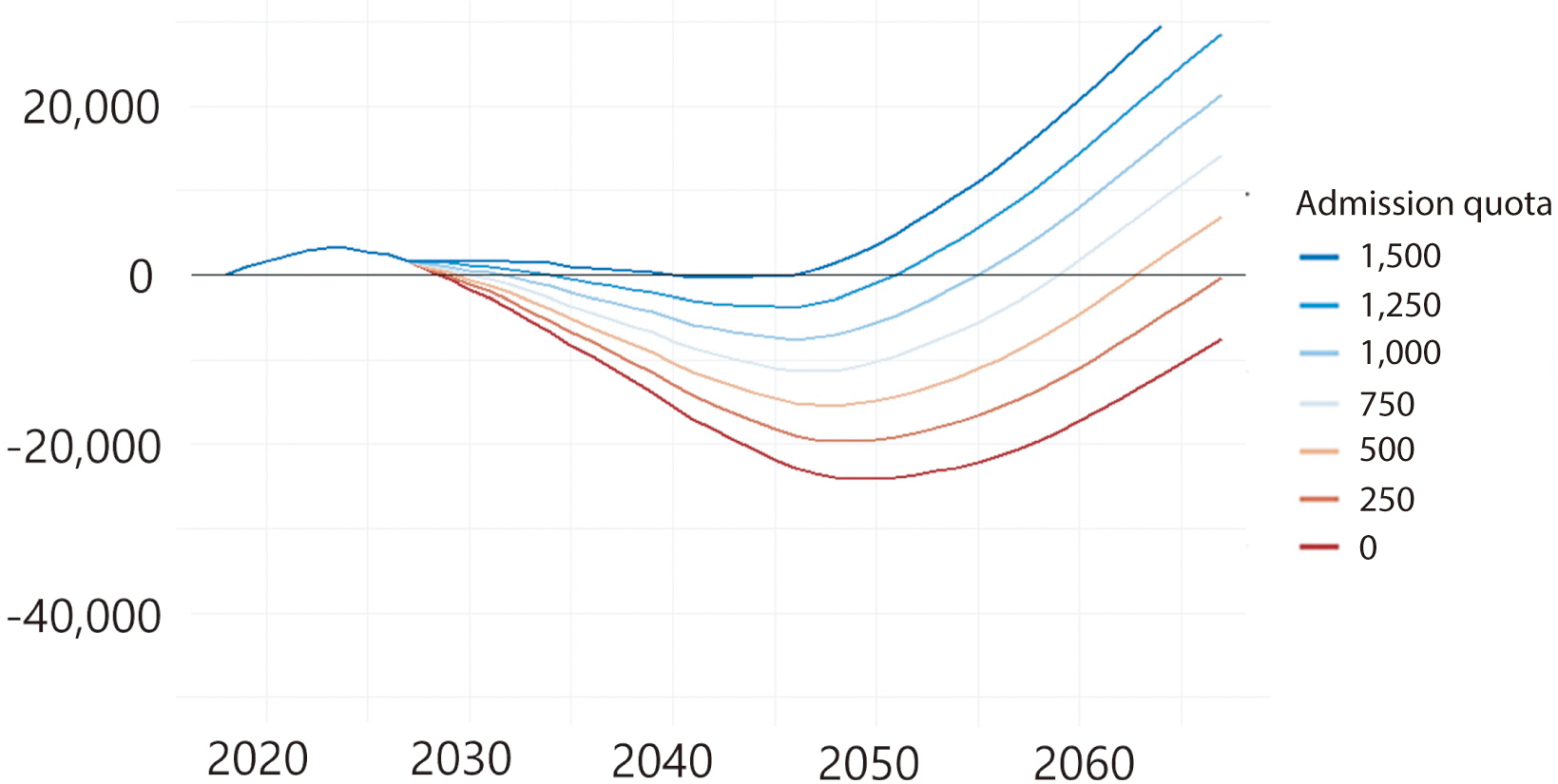Ewha Med J.
2024 Oct;47(4):e64. 10.12771/emj.2024.e64.
Adequacy of the physician workforce for preparing for future society in Korea: an English translation
- Affiliations
-
- 1Department of Preventive Medicine, College of Medicine, Seoul National University, Seoul, Korea
- KMID: 2561418
- DOI: http://doi.org/10.12771/emj.2024.e64
Abstract
Objectives
This study aimed to assess whether the current physician workforce in Korea is sufficient to meet future healthcare demands, considering demographic changes and increasing medical needs. The objective was to project the future supply and demand for physicians and identify potential regional disparities.
Methods
Data on outpatient and inpatient utilization rates were obtained from the 2018 Health Insurance Statistical Yearbook, and population projections were sourced from Statistics Korea (2017–2067). Medical demand was estimated by multiplying these utilization rates by the population projections. The supply of physicians was projected using a cohort-component model that incorporated medical school quotas and age-specific attrition rates. Two scenarios were developed to account for changes in productivity: Scenario 1 assumed a 50% decrease in productivity for physicians aged 65–75, and Scenario 2 assumed a 75% decrease. Additionally, regional projections were analyzed using data from provincial and secondary medical service areas.
Results
National-level projections suggest a looming shortage of physicians, despite an increase in medical school admissions. Both scenarios predict a physician shortage, particularly in regions such as North Gyeongsang, South Chungcheong, and Jeju Island, by 2047. In contrast, Seoul is likely to see a surplus of physicians. The regional analysis underscores substantial disparities in physician distribution, with underserved areas experiencing increasingly severe shortages.
Conclusion
The study concludes that without flexible adjustments to medical school admission quotas and healthcare delivery systems, Korea will face significant physician shortages in the coming decades. To address this, it is necessary to increase the number of physicians in underserved regions and improve the efficiency of healthcare utilization.
Keyword
Figure
Cited by 1 articles
-
Halted medical education and medical residents’ training in Korea, journal metrics, and appreciation to reviewers and volunteers
Sun Huh, A Ra Cho
J Educ Eval Health Prof. 2025;22:1. doi: 10.3352/jeehp.2025.22.1.
- Full Text Links
- Actions
-
Cited
- CITED
-
- Close
- Share
- Similar articles
-
- Beyond numbers: a sustainable approach to physician workforce planning in the Philippines
- Current status and implications of policy developments regarding enrollment quotas in Japanese medical schools
- Analysis on Workforce and Workload of Korean Emergency Physicians
- Analysis of the relative importance of key factors in nursing workforce management for pandemic response in general hospitals and long-term care hospitals
- SciBabel: a system for crowd-sourced validation of automatic translations of scientific texts


